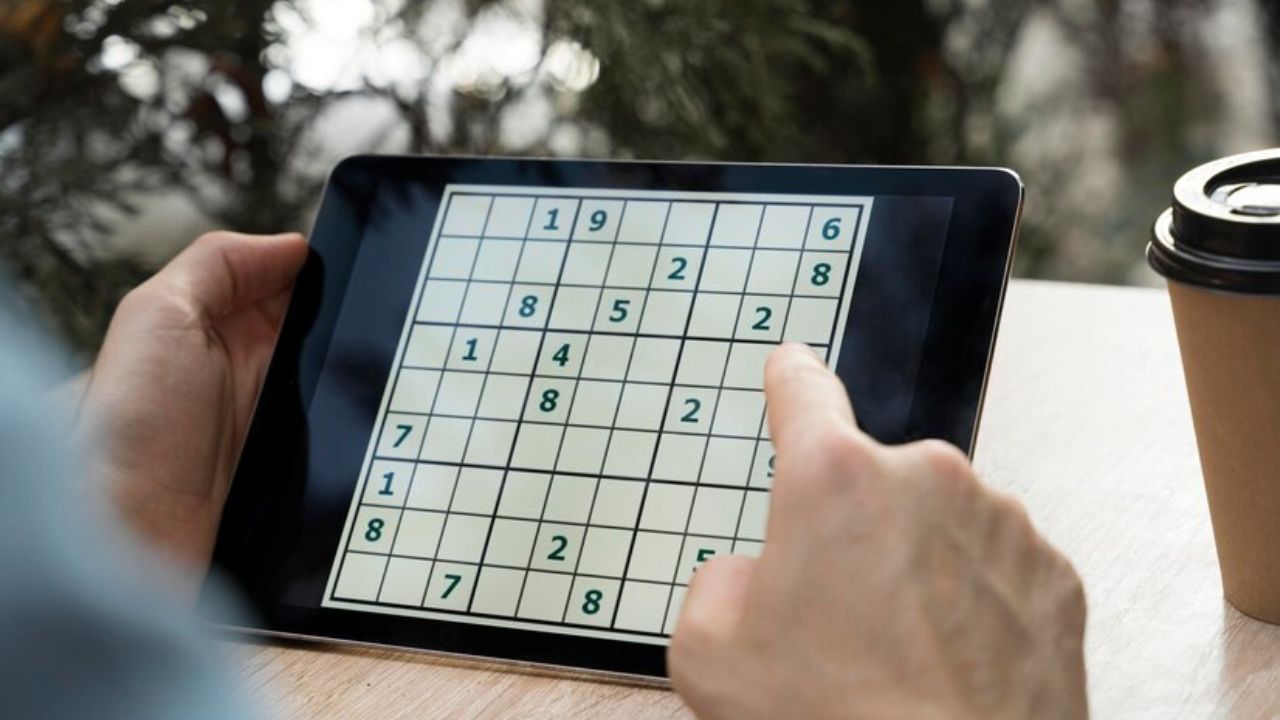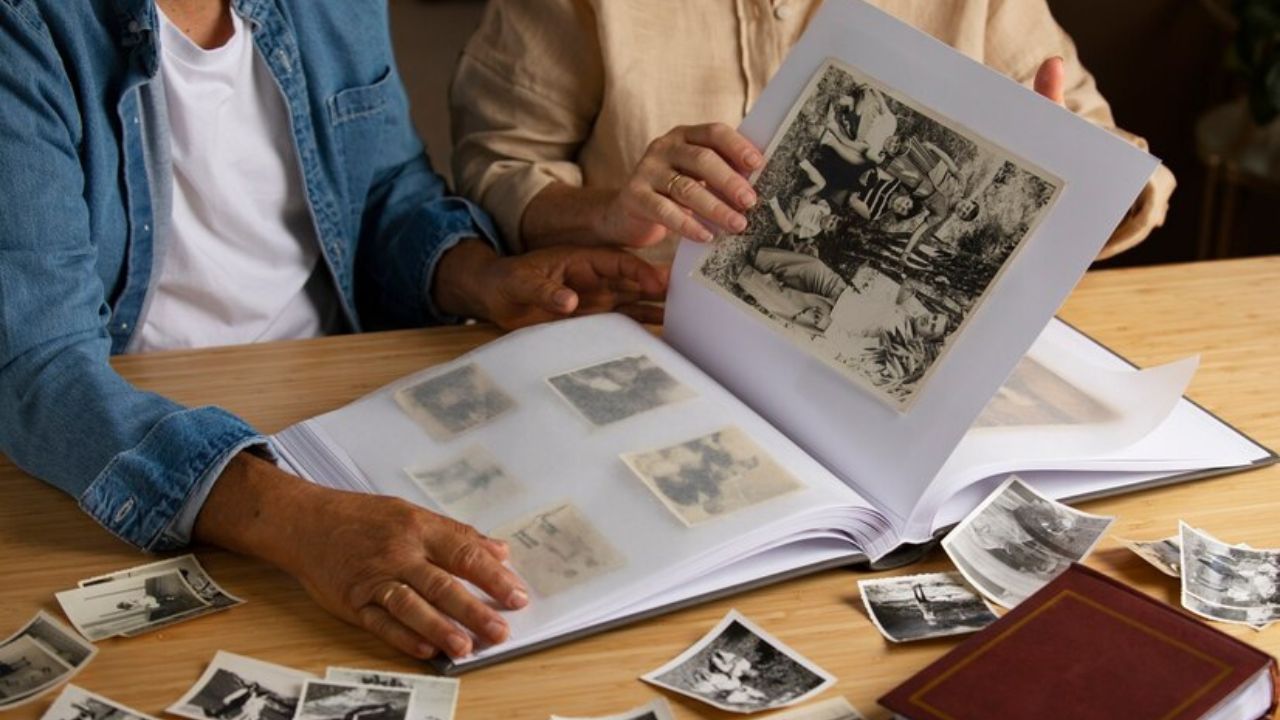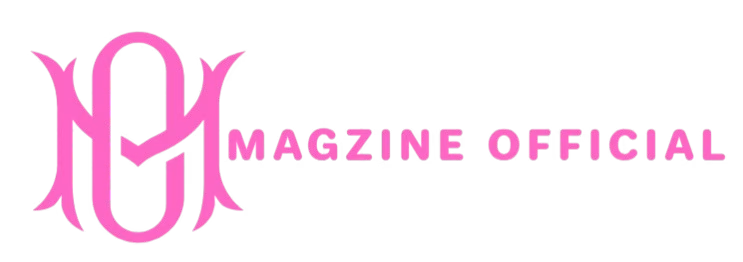ENTERTAINMENT
totally wackadoodle nyt crossword: The Ultimate Guide

Are you ready to take on one of the quirkiest crossword puzzles that the New York Times has to offer? The Totally Wackadoodle NYT Crossword is notorious for its whimsical clues and unconventional themes. Perfect for crossword enthusiasts looking to spice up their puzzle games, this guide will equip you with everything you need to tackle this peculiar puzzle with confidence. Get ready to explore tips, tricks, and insider knowledge to help you master the art of the Totally Wackadoodle crossword.
What Makes the Totally Wackadoodle Crossword Unique?
The Totally Wackadoodle NYT Crossword stands out from traditional crosswords in several ways. For starters, it embraces an offbeat and whimsical tone. The clues often play with puns, pop culture references, and wacky wordplay that you won’t find in your average Sunday puzzle. This creates an engaging challenge that invites solvers to think outside the box and stretch their imagination.
Unlike typical puzzles that adhere strictly to standard conventions, the Wackadoodle puzzle often features unexpected themes and clever twists. Each week, you might encounter a new gimmick or surprise element, whether it’s a theme based on obscure movie lines or playful interpretations of common phrases. This unpredictability adds an extra layer of entertainment and keeps solvers coming back for more.
The blend of creativity and wit in the Totally Wackadoodle crossword makes it a delightful experience, but it can also be a daunting challenge. Many fans of the NYT crossword crave this unique variety, but newcomers may find themselves scratching their heads at the unconventional clues. Fear not—this guide will help you decode the chaos and enjoy every moment of the puzzle-solving process!
Understanding the Structure of the Puzzle
The Layout of the Grid
The grid of the Totally Wackadoodle crossword usually follows the standard crossword format, consisting of black and white squares. However, be prepared for some unconventional layouts! While most crosswords have symmetrical grids, the Wackadoodle puzzle may break this rule, featuring unexpected shapes or sections. This creates additional challenges in navigation and strategy as you work through the clues.
Additionally, the placement of black squares can vary dramatically, which may disrupt your pattern recognition skills as you search for answers. Keep an eye out for areas where solving one answer could lead to breakthroughs in adjacent slots, as interconnected words can illuminate multiple sections of the grid.
Common Clue Types
When it comes to clues, the Totally Wackadoodle crossword is known for its creative flair. Here are some clue types you may encounter:
- Puns and Wordplay: Expect double meanings and playful language that requires you to think beyond the obvious. For example, a clue might read “Stealing a cat’s lunch” with the answer being “purrloined” instead of a straightforward reference to theft.
- Pop Culture References: From contemporary television shows to classic movies, the puzzle often incorporates quirky references that appeal to a wide audience. Stay updated on current trends, as you might need to recall details from the latest viral sensation or iconic film moment.
- Uncommon Trivia: The Wackadoodle crossword delights in challenging solvers with obscure trivia. Whether it’s a reference to a little-known artist or a niche historical fact, you’ll want to be prepared for anything. Keep a broad knowledge base to tackle these trivia-heavy clues.
Tips for Navigating the Grid
Navigating the grid effectively is key to making progress. Here are some strategies to help you:
- Start with the Easy Clues: Begin with clues you feel confident answering. Since the Wackadoodle puzzle often intertwines answers, completing a few simple words can provide you with crucial letters for more complex ones.
- Take Note of Theme Clues: Often, the clues that align with the week’s theme can serve as anchors. If you can determine the puzzle’s overall theme, it may help you decipher related clues more easily.
- Use Pencil and Paper: While digital solvers have their perks, working with a physical pencil on paper allows for more flexibility, especially when erasing and making changes. Consider writing out your answers to get a better sense of the grid’s construction.
Strategies for Success
Build Your Crossword Vocabulary
To succeed at the Totally Wackadoodle NYT Crossword, building a strong crossword vocabulary is essential. Familiarize yourself with common abbreviations, popular phrases, and terms frequently used in crosswords. Here are a few to get you started:
- Abbreviations: These often pop up in clues as shorthand for organizations, states, and common expressions. Knowing that “U.S.” may refer to “AMER” or “Inc.” often translates to “CORP” can save valuable time.
- Common Words: Certain words appear repeatedly across crosswords, like “Ore,” “Ala,” or “Eon.” Make a list of these words to increase your problem-solving efficiency.
- Unique Spellings: Be mindful of words that may have alternate spellings or forms. For example, “color” in American English versus “colour” in British English.
Collaborate with Others
Crossword puzzles can be a social activity, and solving with friends or family can lead to more enjoyable experiences. Here’s how to make the most of collaborative solving:
- Share Knowledge: Each person brings unique experiences and knowledge to the table. Discuss clues and share insights to spark creativity and enthusiasm.
- Divide and Conquer: Split the clues into categories based on difficulty or sections of the grid. This approach allows everyone to focus on their strengths and makes the process more efficient.
- Encourage Discussion: Engaging in discussions about potential answers can inspire ideas you hadn’t thought of and can create a fun, interactive atmosphere.
Resources for Enhanced Puzzle-Solving
Online Tools and Apps
The internet is filled with resources to help you improve your crossword skills. Consider using the following tools:
- Crossword Solvers: Websites like OneAcross and Crossword Solver can assist you in finding words based on the letters you have. These tools are especially helpful for tricky or infuriating clues.
- Word Lists: Refer to websites that compile popular crossword words and abbreviations. Familiarizing yourself with these lists will enhance your vocabulary and give you a leg up on similar puzzles.
- Mobile Apps: Download crossword puzzle apps that feature daily challenges. Regular practice will sharpen your skills and build confidence as you become more accustomed to the various styles and formats.
Books and Guides
Books centered around crossword solving offer strategies, vocabulary enhancement, and themes. Some recommended books include:
- “Word Play” by David Steinberg – This book focuses on wordplay techniques and strategies to help you think creatively while solving puzzles.
- “Crossword Puzzle Challenges for Dummies” by Jean McNulty – A practical guide to understanding the basics of crosswords and improving your skills.
- “The New York Times Crossword Puzzles for Beginners” by Will Shortz – Ideal for both beginners and seasoned pros, this collection offers a diverse range of puzzles with varying difficulty levels.
Examples of Totally Wackadoodle Clues
Analyzing Specific Clues
In order to illustrate the unique characteristics of the Totally Wackadoodle NYT Crossword, let’s examine some example clues and their answers:
- Clue: “Bagpipes’ favorite drink?”
Answer: “Chanterelle.” (A pun on “chanter” for bagpipes and “elle” for a feminine touch)
- Clue: “What a magician pulls at a birthday party?”
Answer: “Rabbits.” (While this seems straightforward, the hint of a birthday party adds a splash of whimsy.)
- Clue: “Place to find a good deal on fiction?”
Answer: “Novelty.” (This clue plays on the double meaning of a ‘novel’ as a book and ‘novelty’ as something special or unique.)
Learning from Past Puzzles
Looking back at past Totally Wackadoodle puzzles can provide valuable insights into the types of clues and themes you may encounter in future editions. Analyze past puzzles that stumped you or fascinated you for clever clues and word pairings.
Additionally, consider joining online forums or communities dedicated to crossword solving. Engaging with others who share your passion can provide support, resources, and a chance to learn from experienced solvers.
The Joy of the Totally Wackadoodle Crossword
Celebrating the Quirky Challenge
At its heart, the Totally Wackadoodle NYT Crossword is about creativity, imagination, and fun. This whimsical approach to traditional crosswords invites solvers to explore language in a captivating way. Whether you’re a seasoned solver or just starting your crossword adventure, there’s much to gain from tackling these unique puzzles.
Every completed puzzle is a small victory, a testament to your resourcefulness and problem-solving abilities. With each clue solved, you not only expand your vocabulary but also hone your analytical skills and critical thinking, all while enjoying the thrill of the chase.
Making the Most of Your Experience
To truly enjoy the experience, approach each puzzle with an open mind. Treat challenges as opportunities to learn rather than obstacles to overcome. And remember, it’s perfectly acceptable to take breaks and return refreshed, even if it means leaving a few clues unsolved for another time.
The community surrounding the Totally Wackadoodle NYT Crossword is vibrant and welcoming. Don’t hesitate to share your experiences, successes, or frustrations with fellow enthusiasts. Engaging with others can deepen your appreciation for the art of crossword solving.
Conclusion
The Totally Wackadoodle NYT Crossword is a delightful blend of creativity, humor, and challenge, perfect for anyone looking to elevate their puzzle-solving skills. With its unique structure, clever clues, and endless surprises, it’s an exhilarating experience for crossword lovers everywhere.
ENTERTAINMENT
Dive into the World of 123movies Alternatives for Safe Streaming

In today’s digital age, the way we consume media has transformed dramatically. Gone are the days of waiting for your favorite movie to air on television or renting DVDs from your local store. The rise of streaming services has made it easier than ever to watch movies and TV shows whenever and wherever you want. But with this convenience comes challenges, especially when platforms like 123movies come into play. This blog post will explore alternatives to 123movies, focusing on safe and legal streaming options for our audience of avid movie lovers.
What Was 123movies All About?
123movies gained popularity as a go-to platform for streaming movies and TV shows for free. It offered a vast library of content, appealing to those seeking the latest releases without the subscription fees. However, its legality was often questioned, leading to shutdowns and mirrors of the site appearing under different domains. Understanding why 123movies was so popular can help us find safer, legal alternatives.
The allure of 123movies was its vast, diverse library. From blockbuster hits to lesser-known indie films, users had access to content that spanned genres and decades. This variety was unmatched by many legal streaming services, drawing in users who craved more choices. However, the constant threat of malware and legal issues made it a risky choice for viewers.
Additionally, the appeal of free content was undeniable. In an era where multiple subscriptions can strain budgets, the promise of free entertainment was a major draw. Recognizing this need for accessible content is crucial in exploring alternatives that offer both affordability and legality.
The Rise and Fall of 123movies
123movies’ rapid rise to fame tells a fascinating story of the internet’s power and pitfalls. It became a household name almost overnight, providing users worldwide easy access to pirated content. However, this success was short-lived due to increasing legal pressures from copyright holders and law enforcement agencies.
At its peak, 123movies boasted millions of users daily, making it one of the most visited streaming sites globally. Despite frequent takedowns, the site would often reemerge under a new guise, continuing to serve its loyal user base. This game of digital cat and mouse highlighted the site’s resilience but also its unsustainable nature.
The eventual fall of 123movies served as a cautionary tale about the legal implications of pirated content. Users faced potential malware risks, and site operators had to contend with legal action. This decline underscores the importance of seeking out legitimate streaming services that respect copyright laws and protect users’ data.
Is Streaming on 123movies Legal?
The question of legality surrounding 123movies is complex. In most parts of the world, accessing pirated content is illegal and can lead to consequences for both providers and users. While some countries may not strictly enforce these laws, the risks of legal action and malware infections remain significant.
When you stream on a platform like 123movies, you are engaging with content that has not been authorized by the rights holders. This violation of copyright laws exposes users to potential legal repercussions. Understanding these risks is crucial for making informed decisions about where you stream your content.
Furthermore, many users are unaware of the dangers of malware associated with illegal streaming sites. These platforms often host malicious ads and software that can compromise your device’s security. Opting for legal streaming services not only eliminates these risks but also supports the creators behind the content you love.
Why Consider Alternatives to 123movies?
Exploring alternatives to 123movies is not just about legality; it’s also about enhancing your streaming experience. Legal platforms offer a host of benefits that improve the quality, convenience, and security of your viewing sessions.
First, legal streaming services provide high-quality content with reliable streaming speeds. You won’t have to endure buffering issues or low-resolution videos often associated with illegal sites. This ensures that your movie nights are enjoyable and stress-free.
Second, legal platforms offer curated content that aligns with your preferences. Services like Netflix and Hulu use algorithms to suggest shows and movies based on your viewing history, making it easier to discover new favorites. This personalized approach enhances the overall user experience.
Lastly, using legitimate streaming services supports the film industry and its creators. By subscribing to these platforms, you’re contributing to the production of new content and ensuring that artists and filmmakers are compensated for their work. This support helps sustain the industry and encourages the creation of diverse content.
Top Legal Streaming Services to Explore
Now that we understand the benefits of legal streaming, let’s explore some top alternatives to 123movies that prioritize both quality and legality. These platforms offer extensive libraries and are accessible to users worldwide, providing a safe haven for movie enthusiasts.
Netflix is a leading streaming giant known for its original content and vast library of films and series. With various subscription plans, Netflix caters to different budgets and preferences. Its user-friendly interface and personalized recommendations make it a favorite for millions.
Amazon Prime Video offers a diverse range of movies, TV shows, and exclusive content. Prime members enjoy additional benefits like free shipping and access to other Amazon services. Its flexibility in purchase and rental options adds to its appeal.
Hulu is renowned for its extensive TV show collection, including current-season episodes of popular series. Its live TV option allows users to stream live broadcasts, making it a versatile choice for cord-cutters looking to replace traditional cable.
Exploring Niche Streaming Platforms
Beyond the mainstream giants, there are niche streaming platforms that cater to specific interests and genres. These services provide unique content that may not be available on larger platforms, offering a more tailored viewing experience.
Shudder is a haven for horror fans, offering a curated selection of films and series that span the horror genre. With exclusive and classic titles, Shudder delivers spine-chilling content for those who crave thrills.
Crunchyroll is the go-to platform for anime enthusiasts. It hosts a vast library of anime series, films, and simulcasts straight from Japan. Its community features and forums enhance the viewing experience by connecting fans worldwide.
Criterion Channel focuses on classic and art-house films, celebrating cinema’s rich history. With a carefully curated library and insightful commentary, Criterion Channel offers a deep dive into the world of film for cinephiles and scholars.
How to Choose the Right Streaming Service for You
With so many options available, selecting the right streaming service can be challenging. Here’s a guide to help you make an informed decision based on your preferences and viewing habits.
First, consider the type of content you enjoy. If you’re into diverse genres and new releases, Netflix or Amazon Prime Video might be ideal. For specific interests like anime or horror, platforms like Crunchyroll or Shudder are better suited.
Next, evaluate the cost and subscription plans. Determine your budget and compare the pricing of different services. Look for bundled deals or trial periods that allow you to test the platform before committing.
Finally, assess the user experience and device compatibility. Ensure that the service is easy to use and accessible on your preferred devices, whether that’s a smart TV, tablet, or smartphone. A seamless viewing experience enhances your enjoyment of the content.
The Future of Movie Streaming
The landscape of movie streaming continues to evolve, driven by advancements in technology and changing consumer demands. Understanding these trends can help you stay ahead and make the most of your streaming experience.
One significant trend is the rise of interactive content, where viewers can influence the storyline or outcome of a film or series. This level of engagement offers a unique viewing experience that traditional formats can’t match.
Additionally, streaming platforms are investing in virtual reality (VR) and augmented reality (AR), creating immersive environments for viewers. These technologies offer new ways to experience content, blurring the lines between reality and fiction.
Finally, expect to see more original content from streaming services as they compete for subscriber loyalty. Exclusive series and films not only attract new users but also retain existing ones, ensuring a steady stream of fresh content.
Conclusion
While the allure of free sites like 123movies is understandable, the risks and legal implications make it a less-than-ideal choice for movie lovers. By exploring legal alternatives, you can enjoy high-quality content while supporting the industry’s growth and innovation.
Whether you’re drawn to mainstream giants or niche platforms, there’s a streaming service that aligns with your interests and viewing habits. Take the time to explore these options and choose the one that best fits your needs.
For those eager to learn more about the world of streaming, consider engaging with online forums and communities that share your passion for film. Together, we can celebrate the art of cinema and continue to support its evolution in the digital age.
ENTERTAINMENT
Mastering the Dragoon Plus Supernaturalist Combo with Gravekeepers in Yu-Gi-Oh

In the dynamic world of Yu-Gi-Oh, creating powerful endboards is crucial for gaining the upper hand in duels. One particularly potent strategy involves the combination of Dragoon, Supernaturalist, and Gravekeepers. This blend offers a unique twist to traditional strategies, providing players with a formidable setup that can dominate opponents. In this guide, we’ll explore how to effectively integrate these elements into your gameplay, ensuring you can create an unbeatable endboard. We’ll cover everything from card synergy to strategic plays, giving you the confidence to wield this powerful combination.
The Essence of Dragoon in Yu-Gi-Oh
Dragoon, known formally as Red-Eyes Dark Dragoon, is a game-changer. This fusion monster boasts incredible abilities that can turn the tide of any duel. With the ability to negate card effects and inflict damage, Dragoon is a force to be reckoned with. Its presence on the field can significantly alter an opponent’s strategy, causing them to rethink their moves carefully. To utilize Dragoon effectively, it’s essential to understand its role within the deck and how to summon it efficiently.
One of Dragoon’s main strengths lies in its resilience. Once on the field, it becomes challenging for opponents to remove it without resorting to specific counter cards. This makes Dragoon an excellent choice for maintaining field control. Additionally, Dragoon’s effect allows you to destroy monsters while dealing additional damage, making it a double threat. Learning to protect Dragoon and keep it on the field will be key to mastering this strategy.
To summon Dragoon, you’ll need to integrate fusion materials into your deck. Cards like Red-Eyes Fusion or Verte Anaconda can simplify the process, enabling you to bring Dragoon out quickly. It’s crucial to build a deck that can access these cards consistently, ensuring you have multiple avenues to summon your powerful fusion monster.
Unleashing the Power of Supernaturalist
The Supernaturalist is another pivotal piece in this strategic puzzle. Gravekeeper’s Supernaturalist is renowned for its ability to generate field presence and provide protection to your cards. By playing Supernaturalist, you can bolster your defense while maintaining offensive capabilities. Understanding the strengths of Supernaturalist will allow you to integrate it seamlessly with Dragoon and Gravekeepers.
A key feature of Supernaturalist is its ability to shield your cards from destruction, whether by battle or card effects. This protection ensures that your setup remains intact, giving you the upper hand in duels. Additionally, Supernaturalist can search for Gravekeeper’s cards, enhancing consistency and increasing your deck’s overall effectiveness. Leveraging these capabilities will help solidify your strategy.
Supernaturalist thrives when paired with a well-constructed support system. Building your deck to include cards that enhance Supernaturalist’s abilities is vital. Gravekeeper’s cards such as Necrovalley not only boost Supernaturalist but also disrupt your opponent’s plays, providing a dual advantage. Understanding these interactions will enable you to maximize the potential of Supernaturalist in your strategy.
The Gravekeepers’ Strategic Edge
Gravekeepers have been a staple in Yu-Gi-Oh for their control and disruption capabilities. Their unique abilities complement both Dragoon and Supernaturalist, making them an ideal choice for this strategy. To effectively employ Gravekeepers, understanding their synergy with other cards is essential. They excel in controlling the game state, preventing your opponent from executing their strategy effectively.
One of the main strengths of Gravekeepers lies in their ability to lock down your opponent’s graveyard. Necrovalley, a key field spell, prevents cards in the graveyard from being affected, hindering strategies that rely on graveyard manipulation. This alone can disrupt many popular Yu-Gi-Oh archetypes, giving you a significant advantage. Combining this with Dragoon and Supernaturalist creates a formidable defense.
Incorporating a variety of Gravekeeper’s monsters and spells can provide additional benefits. Cards like Gravekeeper’s Commandant and Gravekeeper’s Spy enhance your deck’s consistency, allowing you to access critical cards more reliably. These cards also contribute to maintaining field presence, enabling you to apply pressure while defending your position.
Crafting the Ultimate Endboard
Creating a powerful endboard with Dragoon, Supernaturalist, and Gravekeepers requires careful planning and execution. An endboard is the final setup on your field at the end of your turn, which should be capable of withstanding your opponent’s attempts to break it. A well-constructed endboard can often lead to victory on its own, provided it is robust and versatile.
To craft an effective endboard, focus on establishing Dragoon and Supernaturalist with the support of Gravekeeper’s cards. Prioritize getting Dragoon onto the field early, as its negation ability can thwart your opponent’s plays. Follow up with Supernaturalist to protect your setup, ensuring that your board remains intact throughout the duel.
The synergy between these cards will determine the strength of your endboard. Utilizing cards like Necrovalley to enhance protection and disruption will further solidify your position. Aim to maintain a balance between offensive and defensive capabilities on your endboard, providing flexibility to adapt to various scenarios during the duel.
Integrating Card Synergies
Understanding the synergies between Dragoon, Supernaturalist, and Gravekeepers is crucial for optimizing your strategy. Each card brings unique strengths to the table, and combining them effectively can create a synergy that elevates your gameplay. Identifying these interactions will help you craft a cohesive deck that functions seamlessly during duels.
For instance, using Necrovalley to bolster the effects of Gravekeeper’s cards can amplify their impact. This, in turn, provides additional protection and disruption, complementing Dragoon’s negation ability. Similarly, Supernaturalist’s protection effect ensures that Dragoon stays on the field longer, allowing you to capitalize on its offensive capabilities.
Experimenting with different card combinations will help you unlock the full potential of this strategy. Pay attention to how each card interacts with others in various scenarios, adjusting your deck as needed to maximize synergy. This approach will enhance your understanding of the strategy and improve your overall performance in duels.
The Importance of Deck Consistency
Consistency is key to any successful Yu-Gi-Oh strategy. Ensuring that your deck can reliably access its key components is vital for executing your plan effectively. By focusing on consistency, you can increase your chances of drawing essential cards and maintaining control over the duel.
To achieve consistency, consider incorporating search and draw engines into your deck. Cards like Terraforming and Pot of Prosperity can help you access key cards like Necrovalley and Dragoon more frequently. This reduces the chances of bricking, where your hand consists of unplayable cards, and increases your deck’s overall reliability.
Balancing your deck’s ratios is essential for maintaining consistency. Ensure that you have the right mix of monsters, spells, and traps to support your strategy without compromising your ability to draw essential components. Regularly testing and adjusting your deck will help you achieve the optimal balance for consistent performance.
Countering Opponent Strategies
While building a strong endboard is crucial, being prepared to counter your opponent’s strategies is equally important. Understanding common archetypes and their tactics will help you anticipate potential threats and develop effective countermeasures. By doing so, you can maintain control of the duel and prevent your opponent from gaining the upper hand.
Familiarize yourself with popular decks in the current meta and identify their weaknesses. For example, decks that rely heavily on the graveyard can be disrupted by Necrovalley, while those that depend on special summons can be hindered by cards like Solemn Judgment. Incorporating these countermeasures into your deck will help you stay one step ahead of your opponents.
Adaptability is key when facing diverse strategies. Be prepared to adjust your gameplay based on your opponent’s moves, using your cards strategically to disrupt their tactics. This flexibility will increase your chances of success and ensure that you’re ready to face any challenge during a duel.
Enhancing Your Gameplay Through Practice
Mastering the Dragoon plus Supernaturalist and Gravekeepers strategy requires practice and dedication. Regularly testing your deck against various opponents will help you refine your skills and gain valuable insights into your strategy’s strengths and weaknesses. By honing your abilities through practice, you’ll be better prepared to face any challenge that comes your way.
Participate in local tournaments and online platforms to gain experience against a wide range of players. This exposure will help you adapt to different playstyles and improve your decision-making during duels. Over time, you’ll develop a deeper understanding of your strategy and its nuances, allowing you to make more informed choices.
Reflect on your experiences and learn from your mistakes. Analyzing your gameplay will help you identify areas for improvement and adjust your strategy accordingly. This ongoing process of refinement will lead to greater success in duels and enhance your overall enjoyment of the game.
Keeping Up with the Meta
The Yu-Gi-Oh meta is constantly evolving, with new sets and strategies emerging regularly. Staying informed about these changes is essential for maintaining a competitive edge. By keeping up with the meta, you can adapt your deck and strategy to counter new threats and capitalize on emerging trends.
Follow official announcements, forums, and social media channels to stay updated on new releases and developments within the game. Engaging with the community will provide valuable insights into the current meta and help you identify potential adjustments for your deck. This knowledge will ensure that your strategy remains relevant and effective.
Be open to experimentation and innovation. The best players are those who can adapt to change and incorporate new ideas into their gameplay. By staying flexible and willing to explore new strategies, you’ll be better equipped to succeed in the ever-changing world of Yu-Gi-Oh.
Building a Supportive Community
Connecting with fellow duelists can enhance your Yu-Gi-Oh experience and provide valuable support and encouragement. By joining a community of like-minded players, you can share strategies, exchange tips, and celebrate successes together. Building a supportive network will enrich your gaming experience and help you grow as a player.
Consider joining local clubs, online forums, or social media groups dedicated to Yu-Gi-Oh. These platforms offer opportunities to engage with other players, participate in discussions, and access valuable resources. By actively participating in these communities, you’ll expand your knowledge and develop lasting connections with fellow enthusiasts.
Support others in their Yu-Gi-Oh journeys by sharing your experiences and insights. Offering guidance and encouragement can foster a positive and inclusive environment for all players. By contributing to the community, you’ll help create a welcoming space where everyone can enjoy the game and grow together.
Conclusion
Mastering the Dragoon plus Supernaturalist and Gravekeepers strategy in Yu-Gi-Oh requires a combination of knowledge, skill, and adaptability. By understanding the unique strengths of each component and integrating them effectively, you can create a powerful endboard capable of dominating duels. Focusing on deck consistency, countering opponent strategies, and staying informed about the meta will further enhance your gameplay and ensure success.
Remember, practice makes perfect. Dedicate time to refining your skills and learning from your experiences to become a formidable duelist. By building a supportive community and staying open to new ideas, you’ll enjoy a fulfilling and rewarding Yu-Gi-Oh experience.
Now that you’re equipped with the knowledge and insights needed to master this strategy, it’s time to put your skills to the test. Gather your cards, hit the dueling field, and show your opponents the might of your Dragoon plus Supernaturalist and Gravekeepers endboard!
ENTERTAINMENT
ypk22x: Unveiling the Mysteries

‘Welcome to the mysterious world of ypk22x, where secrets unravel and enigmas come to light. Prepare to embark on a journey unlike any other as we delve into the depths of this intriguing phenomenon. Let curiosity be your guide as we uncover the origins, symbolism, and myths surrounding ypk22x. Get ready to expand your mind and open your heart to new possibilities. The adventure begins now!
Origins and History of ypk22x
The origins and history of ypk22x are shrouded in mystery, with whispers of its existence dating back centuries. Some believe it originated from ancient civilizations, passed down through generations as a sacred knowledge.
Throughout history, ypk22x has been veiled in secrecy, only revealed to those deemed worthy of its power. Tales speak of wise sages and enlightened souls who have harnessed its energy for healing and enlightenment.
As time passed, ypk22x evolved and adapted to the changing world, remaining a beacon of light amidst darkness. Its significance transcends borders and cultures, resonating with seekers on a spiritual journey.
Today, ypk22x continues to intrigue and captivate those who seek understanding beyond the mundane. Its enigmatic nature draws individuals towards exploration and self-discovery in ways they never imagined possible.
The Symbolism Behind ypk22x
The symbolism behind ypk22x is shrouded in mystery and intrigue, captivating the minds of those who seek to unravel its hidden meanings. Each element within ypk22x holds a deeper significance, reflecting the interconnectedness of all things in the universe.
In ancient lore, ypk22x was believed to represent balance and harmony, serving as a bridge between the physical and spiritual realms. Its intricate design is said to embody the cyclical nature of life, with each turn revealing new insights and revelations.
As individuals delve into the depths of ypk22x’s symbolism, they may uncover personal truths and unlock dormant potential within themselves. The journey towards understanding ypk22x is not merely intellectual but also spiritual, guiding seekers towards a higher state of consciousness.
Through meditation and introspection, one can tap into the profound wisdom encoded within ypk22x, finding guidance and inspiration along their path. Embracing its symbolism invites transformation and growth on both individual and collective levels.
Common Misconceptions and Myths
Common Misconceptions and Myths about ypk22x often revolve around its mysterious origins. Some believe it to be a product of ancient folklore, while others see it as a modern enigma shrouded in secrecy. Rumors abound regarding its powers and significance, with some claiming it holds the key to unlocking hidden truths about the universe.
There is also a misconception that only certain individuals can experience ypk22x, leading to exclusivity and elitism among seekers. This myth creates barriers for those curious about exploring its depths and potential impact on their lives.
Another common misunderstanding is that ypk22x requires complex rituals or esoteric knowledge to access its benefits. In reality, it transcends such limitations and is available to anyone open to receiving its insights and guidance.
Dispelling these myths allows for a more inclusive understanding of ypk22x’s potential impact on personal growth and spiritual development.
Experiences and Testimonials from those who have experienced ypk22x
Have you ever wondered what it feels like to experience ypk22x? The individuals who have delved into its mysteries share compelling stories of transformation and enlightenment.
Some describe feeling a profound sense of clarity and purpose after encountering ypk22x, as if their path in life suddenly became illuminated with new possibilities. Others speak of inexplicable synchronicities and connections that seemed to align perfectly with their intentions.
Those who have experienced ypk22x often mention experiencing a heightened intuition, allowing them to make decisions with confidence and trust in the universe’s guidance. It’s not uncommon for people to report vivid dreams or visions that offer insights into their past, present, or future.
The testimonials surrounding ypk22x paint a picture of a deeply personal and transformative journey filled with awe-inspiring moments and revelations.
The Future of ypk22x: Predictions and Speculations
As we peer into the horizon, the future of ypk22x appears to shimmer with possibilities. Many speculate that ypk22x’s will continue to evolve and adapt to meet the changing needs of its followers. Some predict that new variations and interpretations of ypk22x will emerge, catering to diverse audiences seeking spiritual growth.
In the coming years, technology may play a significant role in expanding the reach of ypk22x teachings through online platforms and virtual communities. This digital transformation could bring about a global surge in interest and engagement with ypk22x’s practices.
With societal shifts towards mindfulness and holistic well-being, ypk22x’s is poised to capture even greater attention as individuals seek inner peace and balance amidst life’s chaos. Embracing this ancient wisdom may become a mainstream trend, influencing everything from wellness trends to personal development strategies.
The future holds endless possibilities for how ypk22x may shape our lives and society at large. It is an exciting time to witness the unfolding mysteries of this enigmatic practice.
How to Incorporate ypk22x into Your Life
Looking to incorporate ypk22x into your life? Here are some tips on how to embrace this mystical concept:
Start by setting aside dedicated time each day for reflection and meditation. Connect with the essence of ypk22x through quiet contemplation.
Explore different spiritual practices that resonate with you, such as yoga, mindfulness, or energy healing. Find what aligns with the vibrations of ypk22x.
Keep a journal to record your thoughts and experiences related to ypk22x’s. Reflecting on these writings can deepen your understanding and connection to this mysterious force.
Engage in activities that nourish your soul and bring you joy. Whether it’s spending time in nature, creating art, or practicing self-care rituals, prioritize activities that elevate your spirit.
Conclusion
Ypk22x is a mysterious and intriguing phenomenon that has captivated the minds of many. Its origins and history remain shrouded in mystery, while its symbolism continues to intrigue those who seek to unravel its secrets.
Despite common misconceptions and myths surrounding ypk22x, there are those who have experienced it firsthand and have shared their testimonials of its profound impact on their lives. The future of ypk22x’s holds endless possibilities, with predictions and speculations pointing towards even more enigmatic discoveries yet to be unveiled.
For those looking to incorporate ypk22x’s into their lives, exploring its symbolism and embracing its mysteries may lead to new insights and perspectives. Whether through meditation, reflection, or simply staying open to the unknown, integrating ypk22x’s can bring a sense of wonder and curiosity into daily life.
As we continue on our journey of discovery and exploration, let us embrace the mysteries of ypk22x’swith open hearts and minds. Who knows what revelations await those brave enough to dive deep into the enigmatic realm of ypk22x’s.
-

 GAME5 months ago
GAME5 months agoMastering the Fire Kirin Login Experience
-

 BLOG7 months ago
BLOG7 months agoPepper0 Mother and Son
-

 BUSINESS7 months ago
BUSINESS7 months agoWhy Your Business Needs an Elite Eagle Product Partner for Growth
-

 BLOG9 months ago
BLOG9 months agoCzech Harem: Understanding the Controversial Phenomenon
-

 BLOG10 months ago
BLOG10 months agoBunkr Albums: A Comprehensive Guide
-

 FASHION9 months ago
FASHION9 months agoold fashioned news source nyt crossword
-

 NEWS9 months ago
NEWS9 months agospencer new york news: A Comprehensive Guide
-

 BLOG6 months ago
BLOG6 months agoEntreTech.org: Empowering Entrepreneurs Through Technology
